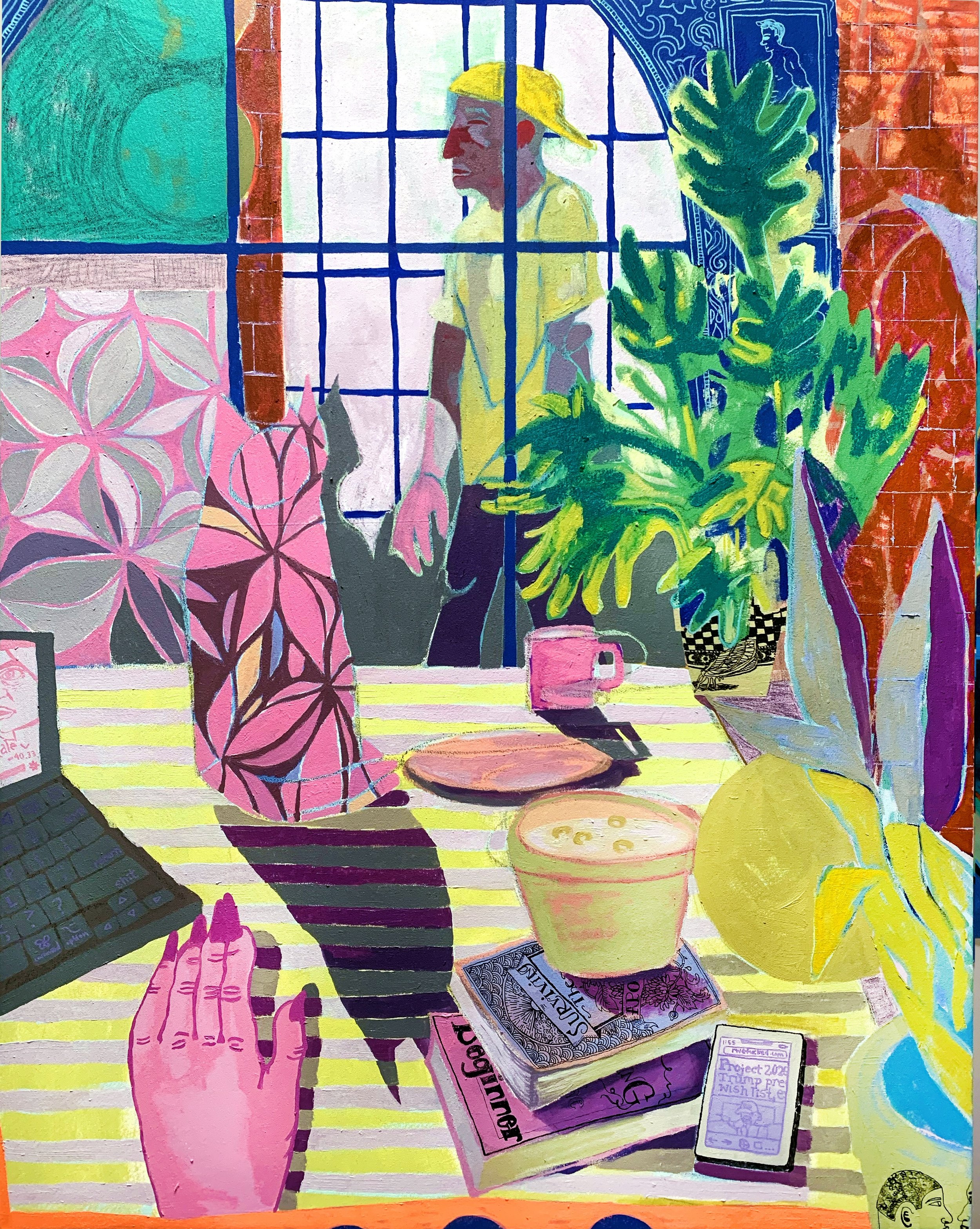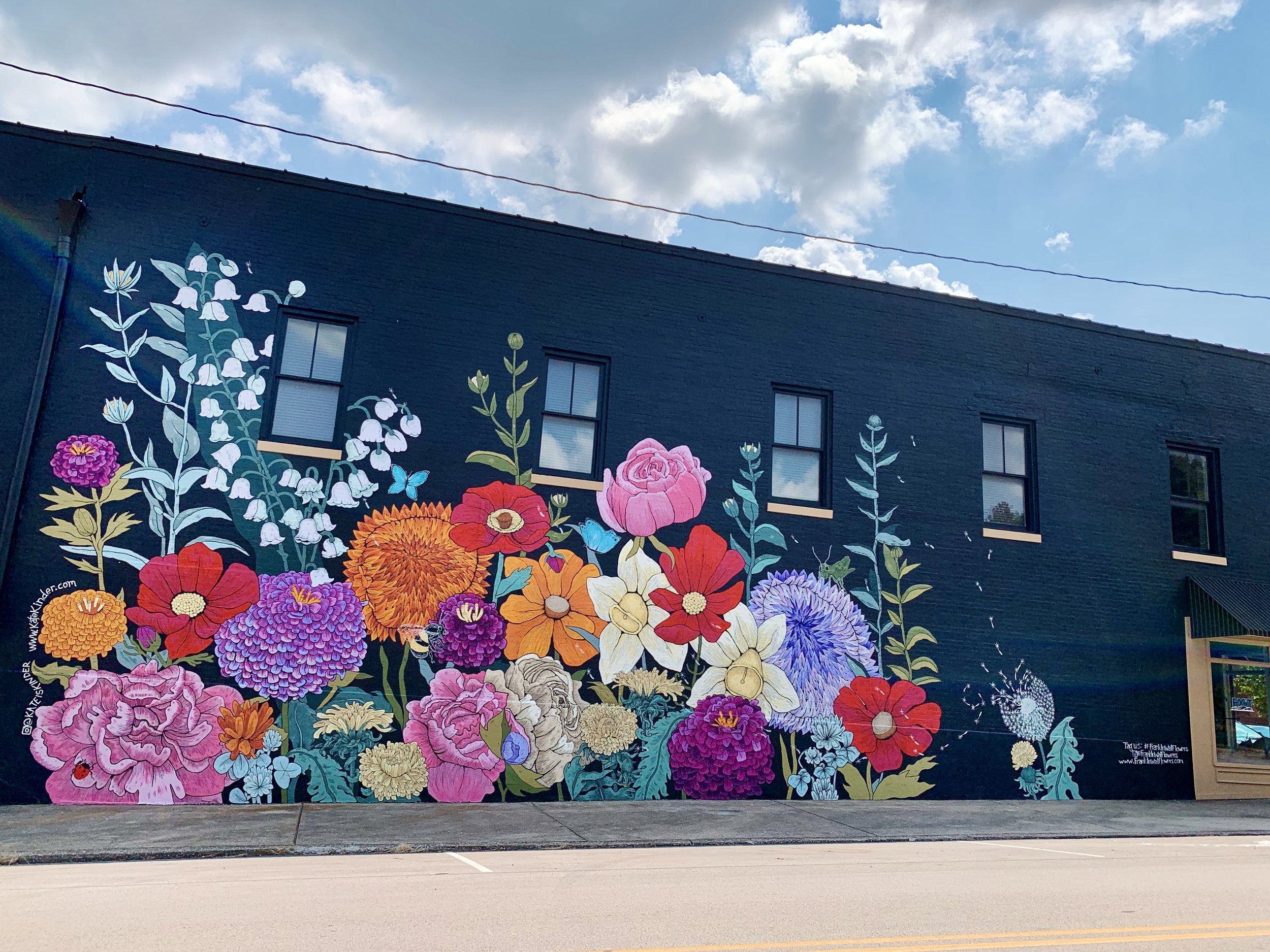Kate Kinder
With a Master of Fine Arts degree from the University of South Florida, a Bachelor of Fine Arts in studio art, a Bachelor of Arts in graphic design, and a minor in art history from Western Kentucky University, Kate Kinder currently lives and paints in Murfreesboro, Tennessee. Kinder has exhibited work internationally with a culmination of work centered on interiority and object philosophies. Growing up in south-central Kentucky rewarded Kinder with an ever-lasting appreciation for slow-made objects, glittering southern light and nurtured her love of art. After growing up in rural America with an artistic family, Kinder found the effervescent Florida landscape crept into her work after relocating in 2014. Kinder has lived and taught in Florida, Central Michigan, as well as Stillwater, Oklahoma. She is now an Assistant Professor of Foundations in Art at Middle Tennessee State University.
Artist Statement
I make paintings in reaction to our visually saturated world. Interested in how our perception of reality fluctuates between internal and external—consciousness and decoration- my work is in conversation with a revolving door of inquiry surrounding value hierarchies, object philosophies, and vision.
The human and object-like figures in my work are often situated in scenery that are retellings of my life. I look to the forms in my paintings as they acquire their own agency, and I allow them to reject a polarized, hierarchical value structure in a way that theorists like Graham Harmon discuss. Object-oriented ontology is a school of thought that rejects the privileging of human existence over nonhuman objects. All relations, including those between nonhumans or things, distort their related objects in the same basic manner as human consciousness does and exist on an equal footing with one another. This school of thought allows us to consider that we exist as objects in the universe with equal experience to a cat, mug, or car.
I make hand-painted and printed double-sided wallpaper tapestries to place the viewer in a loosely translated domestic scene surrounded by painting arrangements. Inside the paintings are figures, still lives, and a wide context of subject matter in varying degrees of recognizability. Invoking the familiar through the incorporation of ubiquitous objects such as wallpaper, mugs, and furniture that teeter between abstract and representation, the characters in my work embody the residue of objects in their spaces. I consider these elements to democratize space and use object-oriented ontology as a means to empathy.
In relation to seeing, I find new relevancy in impressionism because of its relationship with vision. Rejecting symbolism and appreciating painting as decoration, the Nabis (a word in Hebrew meaning “prophet) were a group of rogue impressionist painters who set out to free color and form from symbolic meaning and representational functions to accept and celebrate them as moments of truth. As imperfect bodies, we are physically incapable of recognizing the details of our reality all at once. Seeing color as a medium in and of itself, Pierre Bonnard made colors dance across lengths of canvases that depicted normal, domestic, and nature-inspired scenes from his life.
Using these platforms of question-making, I make work intuitively, through memory, and using photographs I’ve taken of my life, as well as image grabs from reality TV shows to develop subject matter including but not limited to still life, landscape, vegetation, figuration, vessels, interiors, and more. I implement printmaking and ceramics as other culminations of the subject matter and invite them to evolve organically, in the same fashion as the drawings and paintings.
I feel that through a constant interest in painting throughout history and sitting on the shoulders of giants, I aim to ask questions about us, our reality, and our place in the universe.
At Tusen Takk
As a resident at Tusen Takk, I will begin by making observational drawings of the surroundings, a process that is a normal occurrence in my work. I will use the culmination of the drawings and translate the emotive, nonverbal experiences onto canvas by mimicking the drawings. Using a method of collecting color combinations with an app, I will harvest the colors of the surroundings and transcribe them into the works using acrylic, latex, oil paint, and a variety of drawing materials. As an intuitive, experimental artist working primarily in drawing and painting, the new body of works will evolve as I become more familiar with the place, its inhabitants, nature, and light.





Related News

